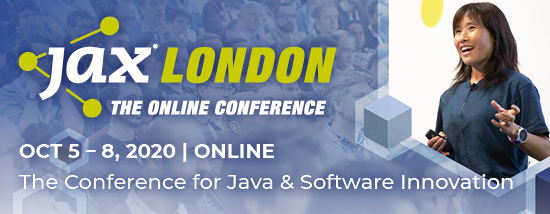A research study by The National Center for Women & Information Technology showed that “gender diversity has specific benefits in technology settings,” which could explain why tech companies have started to invest in initiatives that aim to boost the number of female applicants, recruit them in a more effective way, retain them for longer, and give them the opportunity to advance. But is it enough?
Three years ago, we launched a diversity series aimed at bringing the most inspirational and powerful women in the tech scene to your attention. Today, we’d like you to meet Emi Olsson, US Chief Technology Officer at Kyndryl.
Today’s Women in Tech: Emi Olsson, US Chief Technology Officer at Kyndryl
 In her 23 years with IBM, Emi Olsson has reinvented herself numerous times—working as a system administrator, as a software coder, with research, as a consultant and as an IT architect. In her current role with Global Technology Services, she serves as the chief technology officer overseeing IBM’s work with financial services clients in North America.
In her 23 years with IBM, Emi Olsson has reinvented herself numerous times—working as a system administrator, as a software coder, with research, as a consultant and as an IT architect. In her current role with Global Technology Services, she serves as the chief technology officer overseeing IBM’s work with financial services clients in North America.
Each time, Emi’s personal remit has been to transform herself and grow her skills while helping clients reinvent themselves for the age of cloud and AI. “You have to start with a vision, communicate that vision, empower and listen to your stakeholders, and lead by example to demonstrate how transformation works,” she says.
Emi’s inspirations for reinvention, long before she got to IBM, were her parents—especially her father, whose life in Japan was upended by war. “My father’s education was disrupted by World War II, and so he never completed high school,” Emi says. “After the war, he worked cleaning animal cages at a U.S. Naval Base research lab, and eventually followed the researcher he worked for when that scientist moved to Yale University.”
While making the most of his circumstances and supporting his family, Emi’s father remained intellectually curious. An autodidact, he absorbed volumes of knowledge about biological research, and in retirement was accepted to medical school in Japan. At age 66, he was the oldest incoming student in the school’s history. “My father lost his battle with cancer before he could complete his medical degree,” Emi recounts, “but even in his final days when he was confined to a wheelchair, his colleagues wheeled him to class.”
Emi continues the tradition of her father’s intellectual openness and competitive drive. “When I talk about having a vision for a client engagement, it’s not about having an off-the-shelf objective,” she says. “You have to pull back so you can see the bigger picture—at first with less specificity, and then with a clear focus on the end user. To make that work, you have to give your team buy-in so that they become stakeholders. Then you have to allow them to think, and trust them to be innovative and accountable.”
Leading by Example
To guide her clients in their transitions to the IBM Cloud, Emi often relies on a Design Thinking Stakeholder map, which helps her identify project stakeholders, their expectations and their relationships. Critical components of navigating that map include “repetitive communication of the project vision, so partners and teams can overcome any fears of the unknown,” she says. Also important: listening, a willingness to make leadership changes to remove obstructions to transformation, and “always leading by example.”
For many large organizations, Emi notes, it can be a challenge to dismantle the walls between siloed groups. In addition, new technologies and new ways of thinking often lead to the creation of industry jargon that confuses the conversation instead of contributing to it. “It is important to avoid platitudes,” Emi says. “Allowing for inclusiveness helps everyone achieve a level of understanding that enables them to communicate clearly and achieve results for our clients.”
Sometimes, gamification and activities such as hackathons can get partners and teams thinking in the same direction. “For one large client, we discovered that the mainframe team had not been brought into the discussion about how to migrate the enterprise to the cloud,” Emi recounts. “This had the potential to become a significant problem because no transition to the cloud can occur without the mainframe. Running a hackathon brought them into the mix and gave everybody a sense of ownership of the project.”
Emi credits her mentors—especially those who are IBM Fellows and Distinguished Engineers—with “helping me learn about building relationships and understand the importance of establishing a career plan for myself.”
“I’ve also been fortunate to have a husband who fully supports my career, and children whose pursuits have helped broaden my creative perspective,” Emi says. Her daughter, age 16, aspires to be a systems engineer using quantum technologies. Her son, 11, wants to pursue his interest in science through the lens of creative writing. It would seem that both intellectual curiosity and the drive to reinvent run in the family.
When did you become interested in technology?
I didn’t grow up surrounded by a lot of technology. We watched TV only on special occasions. We didn’t have air conditioning, a clothes dryer, a microwave, or any kind of computer in the house. What I remember most about my childhood with my three sisters is that we read a lot of books. We were frequent visitors of the public libraries and even now I have cards from three different public library systems. Growing up one of my favorite book series was the “How Things Work” series, in addition to mysteries and puzzles of all kinds. To me, technology is one exciting aspect of solving life and business problems.
How did you end up in your career path? What obstacles did you have to overcome?
Early on, I was exposed to computers and media technology through various school programs but never paid them any mind. During high school, a guidance counselor suggested that I look into computer science as a major thinking it would be difficult for me to get a job as a math major. In hindsight, I never regretted that choice and graduated with a dual major in both computer science and math.
Throughout college, I grew to enjoy refining and condensing code to its smallest, most elegant form although I was never truly interested in writing code for the rest of my life. I’ve worked in the support department of the IT service provider hired by my university, first as a lab assistant and eventually taking calls at the IT help desk, thoroughly enjoying solving many of the complex and intricate problems that arose.
Soon after, I was offered a job to join an IT services provider and it was a natural extension of my skills. Growing up in the IT services business, with a passion for finding better ways to provide support, led me to take on short term assignments to develop and launch new software products. Other times, it led to collaboration with IBM Research on new techniques and other ways to operationalize industry-standard processes.
I never really followed a prescribed career roadmap and instead chose to tackle challenges that helped evolve my skills. Over the years, well-meaning leaders or colleagues would advise me against doing specific projects or taking a specific role, warning that it would delay my career progression, but I can say that I never chose career over passion, especially when I think I had something special to contribute.
Like many women, sometimes doubts and insecurities would arise, especially when it came to business or financial aspects, relationship management – in other words, anything that wasn’t technical. I am grateful for the countless people who took their time to share advice, counsel me, prop me up, and motivate me. Coaches and mentors that I’ve encountered throughout my career helped me find alternative ways around obstacles, and I’m a firm believer that all obstacles can be overcome with the right attitude and path.
If it is insurmountable, consider walking away because it simply may not be the right time for you to overcome that obstacle.
My father taught me early on that everyone I meet in life will have something to teach me.
Did you receive support from your family and friends? Do you have a role model?
My father taught me early on that everyone I meet in life will have something to teach me. I also believe that everyone will inspire me in some way. I’ve constantly been surrounded by encouraging family members throughout my life, whether it was my grandparents who trekked in Nepal well into their 80s, my mother’s cousin who sailed around the world in a yacht in his early 20s, or my father who was accepted into a top medical school with a full scholarship in his late 60s. I was raised in an active family with many hobbies which helped firm up the belief that there is always something new to learn or experience.
Over the years, I’ve also leaned towards multi-disciplinary people that have contributed to society as role models with immense impact on my life. Two key people I fully admire include Leonardo Da Vinci, who is best known for his art but had innovative ideas in science and music, and Benjamin Franklin, who was a great writer, inventor, musician, and of course a politician and leader.
Did someone ever try to stop you from learning and advancing in your professional life?
I’ve always enjoyed learning and from time to time would consider going back to graduate school. However, through dialogues with others who asked what I hoped to get out of it that I couldn’t get as part of my job, I’ve come to understand that wanting a higher degree might have been a way for me to try and gain credibility, pick up a skill not related to my day job, or to get a break from the for-profit company culture.
Once I understood my motives, I chose other avenues – establishing my credibility by execution and ensuring quality during project delivery, picking up skills through shadowing other jobs, and recognizing that I needed side ‘passion projects’ to infuse more fun in my job.
A day in Emi’s life
In my 24 years with IBM, I’ve worked as a system administrator, as a software coder, with research, as a consultant and as an IT architect. In my current role with IBM Global Technology Services, which will spin out into an independent company named Kyndryl later this year, I’m the chief technology officer overseeing IBM’s work with financial services clients in North America.
I typically start my day discussing strategy with global colleagues, whether around offerings, technical vitality or professions framework. I prefer to start work early, but the U.S. East Coast morning also happens to be a good time to hold global meetings.
The rest of my day is filled meeting with clients, check-ins with my teams or projects to discuss obstacles, and 1-1 mentoring meetings. I try to carve out as much time as possible to reflect and think every day as I feel that is my strongest asset to the company.
What are you most proud of in your career?
Achieving IBM Fellow is the most obvious and proud moment of my career so far. IBM Fellows are the foremost technical distinction for those who pioneer and develop fields of technology; make major advancements in science and create the innovative solutions our clients need. IBM Fellows are also chosen for their ability to reinvent themselves as technology and business needs change.
I am also proud of the teams and communities that I’ve led and empowered over the years, especially when they gel together, take ownership of an idea, and produce something more than I had originally envisioned.
I’ve benefited greatly from many colleagues, mentors and company-sponsored programs. It gives me great pride when I’m able to give back and see other IBMers achieve Distinguished Engineer status as a result of a program that I sponsored or ran.
Why aren’t there more women in tech?
Tech is sometimes too narrowly defined to purely software coders or hardware engineering. If we broaden tech careers to be inclusive of IT help desk, designers or data scientists, we see more women but there are still not enough as you look at higher levels.
To attract more women into technology, we need to change the image and perception of the industry. If we don’t change about how we think about tech we won’t be able to recruit women into it. Technical careers involve so much more than coding – for example, user centric design, strategy, project management.
Broadening the scope of technical roles for women gives them more options to move up, which I believe will help retain women in technology. I do think we need to recognize the tech industry in broader terms and correct the perception of what it is to be technical. Too often we define ‘technical’ as the person who holds the patent, who invented something, or who developed the code. In reality, you need to be just as technical in understanding how something works, so that it can be implemented in context or planned to be deployed. Being a technical planner means that you understand prerequisites, interdependencies with other technologies, and are able to define how it can be tested. As the tech industry has become much more human-centered in the past years, we also need designers that can apply user research and other techniques to architecture and implementation. We need technical people in marketing, sales, and communications, to have better interactions and feedback loops, and to come up with different ways to measure customer satisfaction.
Could you name a few challenges (or obstacles) women in tech face?
A recent IBM Institute for Business Value study titled, “Dismantling the glass ceiling“, identified actions that we can all take to advance gender equality in technology. Doing so will help us solve problems quicker, provide more technology options to consumers and companies, and lessen the barriers for technology adoption.
Here are some of the recommended actions that I’d like to highlight:
- Help technical women build business and financial acumen: One piece of advice that sticks with me to this day, “If you want to be a CEO someday, make sure you take on roles with profit and loss responsibility.”
- Ensure that women executives mentor men to be advocates of women: Enlist the men around you to not simply mentor but to actively sponsor women in their careers.
- Demonstrate how women are actively listened to in meetings: Women may not always feel comfortable speaking up in large meetings. We need to foster a culture that encourages active listening and encourage women to express their ideas by showing appreciation for diverse voices.
So many things could be easier to use, and we could have many more products and services choices if we included more diverse voices of all kinds, including women.
Would our world be different if more women worked in STEM?
So many things could be easier to use, and we could have many more products and services choices if we included more diverse voices of all kinds, including women.
The benefits of competition and innovation that results from questioning “the way it’s always been done” naturally occur when more diversity is present in a field or industry.
The discussion about diversity is gaining momentum. How long will it take to see results from the current debate?
It won’t take as long as we think. If you look back at the history of women’s voting rights compared with the pace of change of societal attitudes today, I am hopeful that the timeframe for inclusion and acceptance is far more rapid than it used to be.
What advice (and tips) would you give to women who want a tech career?
New technologies and new ways of thinking often lead to the creation of industry jargon that confuses the conversation instead of contributing to it. It is important to avoid platitudes. Allowing for inclusiveness helps everyone achieve a level of understanding that enables them to communicate clearly and achieve business results.
The way to keep on top of ever-changing technology is curiosity and passion. Curiosity is the motivation that will keep you learning and growing. Passion can be derived at home or at work. If you have passion in one part of your life, then it bleeds into all aspects of your life and is generally quite contagious. Follow your passion and you’ll succeed in life and your career.
More Women in Tech:
- Maraja Fistanic and Pia Michel, Founders of LegalTegrity
- Women in Tech: Hadas Weinrib, Head of Marketing, Lightspin
- Women in Tech: Nahid Akhtar, Data Engineer at McMakler
- Women in Tech: May Goldstein, Senior Infrastructure Consultant at Red Hat
- Women in Tech: Sheeka Patak, Senior Software Engineer at Zendesk
The post Women in Tech: “Curiosity is the motivation that will keep you learning & growing” appeared first on JAXenter.
Source : JAXenter























